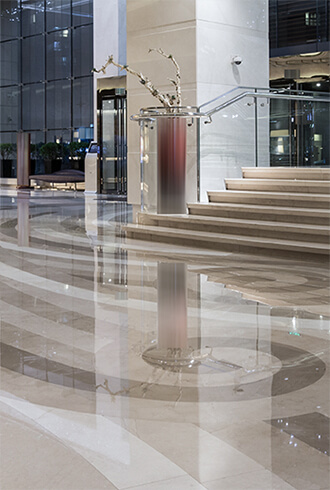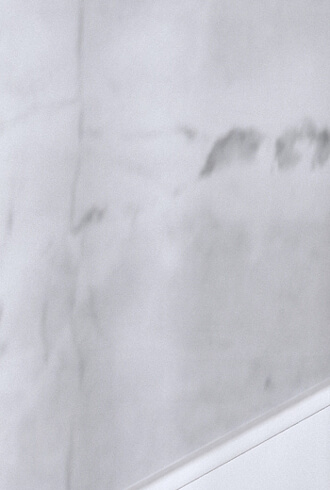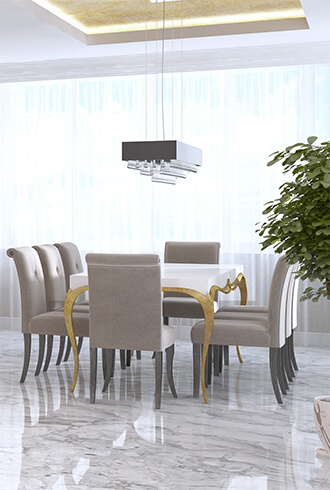How to maintain

Royale Care
Natural Marble is procured from the best quarries around the world.
The arduous task of crafting each masterpiece starts from dress cutting the marble block to get a perfect shape.
Each block is strengthened through the vacuum process using rock resin and mesh. This fills up all the cracks in the nook and cranny of the block.
The treated block is sawed in slabs of required thickness with precision cutting using the gang saw.
The back surface of the slab is reinforced with imported fibre with epoxy.
The top surface is filled with epoxy using vacuum technology making the marble perforation free.
These slabs can also be customized - unpolished, polished, honed finish, leather finish, and many more finishes.
Our recommendation is to buy polished marble in thickness of 18 mm for flooring.
Slabs are available in thickness of 16,18,20,25 & 30 mm.

How to Install
Marble
Marble needs to be installed by an experienced person as its installation enhances the beauty of the stone.
To achieve perfect installation the base should be well prepared and moisture free.
Marble should be cut in manageable size.
If the back surface is supported with thick fibre, it should be removed.
If the back surface is supported by net fibre the slab should be placed as is.
Marble should be laid using white cement or adhesive for bonding.
Joints should not to be filled immediately as open joints allow the trapped moisture to evaporate.
The joint filling should be done using mastic. There should not be any hollow sound on the floor.
Wall installations should be done using adhesive.
Complete the polishing only once the epoxy is dried.
Check the system followed by your laying contractor. How is he preparing the bedding, what size is he going to lay, what bonding material will be used, when does he plan to polish, and how is he going to protect the marble.



Stone floors should be regularly swept with dry non-treated dust mop to remove dust, dirt and grit. Using mats of rugs inside and outside the entrance can also help to minimize the dirt and grit, but caution should be taken to avoid rubber or jute backed mats or rugs as they themselves may stain the stone.
Stone finishes should be washed regularly with clean, potable water and neutral (ph7) cleaners. In the process, wet the stone surface with water first, then follow the manufacturer’s instruction to use the cleaner solution in small over-lapping sweeps, and in the end, rinse the stone finishes thoroughly with the water to remove all traces of the cleaner solution. Polished stone finishes should be regularly buffed with woolen cloth and / or proper polisher to maintain the shine.
For sustainable features, penetrating sealer (e.g.: impregnator) may be applied evenly on the stone surface. The manufacturer’s instruction should be followed for cleaning, sealing and maintenance.
Surface stains may be removed with appropriate cleaning product or household chemical. However, one should avoid using chemicals of any kind unless they are very clear about the type of stain and suitability of the chemical in mind. Advice from the stone supplier or specialist should be sought when in doubt.